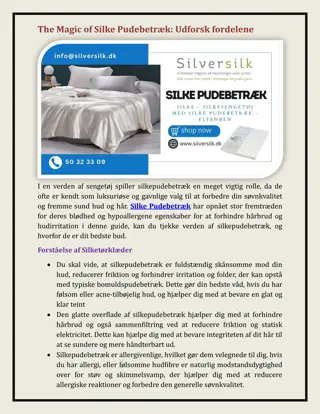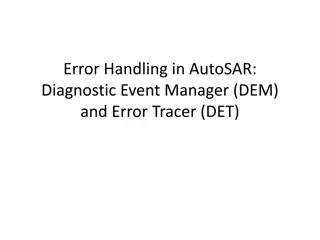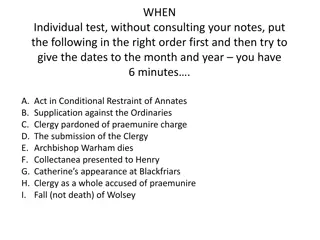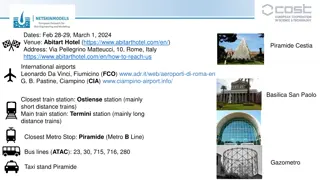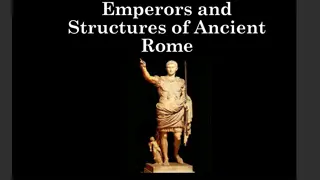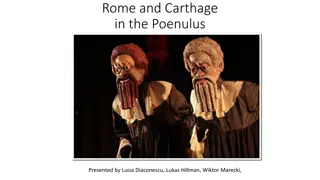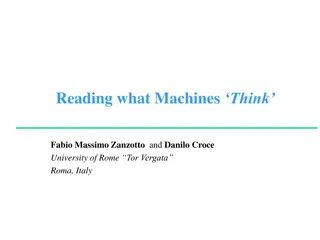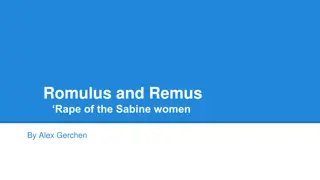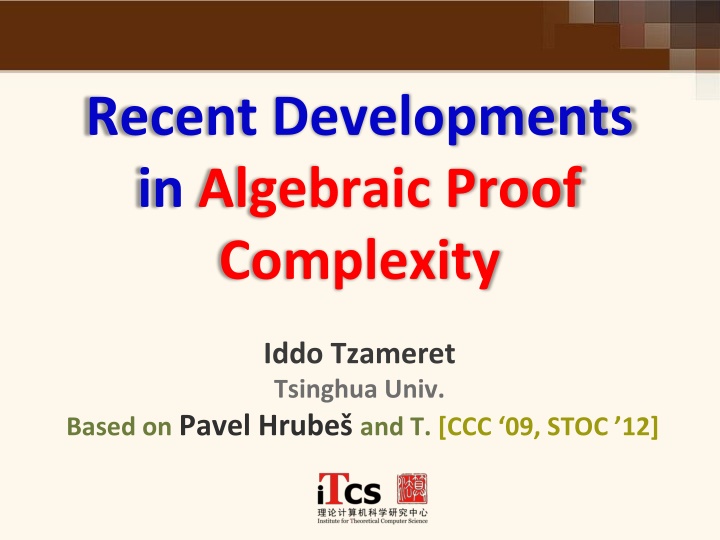
Recent Developments in Algebraic Proof Complexity
Explore the complexities of algebraic proof systems, from Frege proofs to circuit-based proofs, in the context of logic and computational complexity. Delve into the fundamental open problem of proving super-polynomial lower bounds on propositional proofs, and examine case studies in linear algebra involving determinants in complexity classes NC1 and NC2. Discover advancements in polynomial-size NC2-Frege proofs for properties of determinants, showcasing the intersection of algebraic theory and proof complexity research.
Download Presentation

Please find below an Image/Link to download the presentation.
The content on the website is provided AS IS for your information and personal use only. It may not be sold, licensed, or shared on other websites without obtaining consent from the author. If you encounter any issues during the download, it is possible that the publisher has removed the file from their server.
You are allowed to download the files provided on this website for personal or commercial use, subject to the condition that they are used lawfully. All files are the property of their respective owners.
The content on the website is provided AS IS for your information and personal use only. It may not be sold, licensed, or shared on other websites without obtaining consent from the author.
E N D
Presentation Transcript
Recent Developments in Algebraic Proof Complexity Iddo Tzameret Tsinghua Univ. Based on Pavel Hrube and T. [CCC 09, STOC 12]
Frege proofs Take any standard textbook proof systems: Frege, sequent calculus, Hilbert style, Natural deduction Reckhow: it doesn t matter! Two rules for each connective, one for each side: Cut: Axiom:
Complexity of Proofs Fundamental open problem in logic & complexity: Prove super-polynomial lower bounds on propositional proofs!
Circuit based proofs Think of every proof-line as a circuit: NC1 circuits: poly(n) size, O(log n) depth (poly-size formulas; n=# of vars) NC1-Frege (=Frege): proof-lines are formulas NC2 circuits: poly(n) size, O(log2n) depth NC2-Frege: O(log2n) depth proof-lines P/poly circuits: poly(n) size P/poly-Frege (=eFrege): proof-lines are circuits
Circuit based proofs Again: Polynomial-size NC2-Frege proofs: n = number of variables Size of proofs = poly(n) Depth of proof-lines = O(log2n) Note 1: Quasipolynomial-Frege NC2-Frege Note 2: Dealing with circuits: add circuit axiom (Je abek)
Case study: linear algebra Conjecture: Determinant not in NC1 Properties of determinant outside poly- size NC1-Frege proofs. Known: Determinant in NC2 Question: Can we prove properties of determinant with poly-size NC2-Frege proofs ? Conjecture: Yes! (Cook; Rackoff; Bonet, Buss & Pitassi; Soltys); specifically: INVn: AB=I BA=I has NC2-Frege proofs
Case study: linear algebra Previous work: Soltys and Cook ( 04): poly-size Extended Frege proofs for hard-matrix identities like INVn Thm (Hrube and T. 2012): Polynomial-size NC2-Frege proofs of: Det(A) Det(B)=Det(A B) over GF(2), where Det( ) is the determinant function.
Case study: linear algebra Previous work: Soltys and Cook ( 04): poly-size Extended Frege proofs for hard-matrix identities like INVn A,B nxn 0-1 matrices Each proof-line: O(log2n) depth Proof size: nO(1) How to express matrix identities as propositional circuits? Matrix A identified with n2 circuits aij Matrix identities A=B are written as n2 identities aij=bij over GF(2), where Det( ) is the determinant function. Thm (Hrube and T. 2012): Polynomial-size NC2-Frege proofs of: Det(A) Det(B)=Det(A B)
Consequences From this we can already efficiently prove other statements like: AB=I BA=I (AB)-1=B-1A-1 Cofactor expansion Cayley-Hamilton Theorem etc.
Arithmetic proofs (Hrubes & T. 2012): There is a circuit Det and poly-size Arithmetic proofs of (over any field): Det(A) Det(B)=Det(A B) Det(C)=c11 c22 cnn for any A,B,C nxn matrices and C triangular Note: Det( ) must be the determinant function. These are poly(n) size proofs operating with equalities between algebraic circuits of O(log2n)-depth
Algebraic circuits Fix a field F An algebraic circuit over F computes a formal polynomial over F output + + 3 x1 x2 (x1+x2) (x2+3)= x1x2+x22+3x1+3x2 Size = number of nodes
Proof systems in the algebraic world? Proofs of polynomial identities: For F,G algebraic circuits E.g.: (x1+x2) (x2+3) = x1x2+x2x2+3x1+3x2 BPP language (unlike TAUT in coNP) Note: not (algebraic) propositional proofs! F=G
Proof-lines: equations between algebraic circuits Axioms: polynomial-ring axioms Rules: Transitivity of = ; +,x introduction, etc. Circuit-axiom: F=G, if F and G are identical when the circuits are unwinded into trees
x=x reflexivity axiom 2 3=6 field identities axiom product rule commutativity axiom 3x 2=2 3x 2 3x=6x transitivity 3x 2=6x
Relations to polynomial identity testing (PIT) We shall see: Relations to propositional proofs!
[Hrube & T. 09]: Proof-lines: equations between formulas (and more restricted classes): Short Bounded depth proofs for interesting families of polynomial identities: Symmetric polynomials; Vandermonde matrices identities Lower bounds on very restrictive proofs
[Hrube & T. 12]: Proof-lines: equations between circuits Structural results for algebraic circuits carry over to arithmetic proofs Eliminate high degrees (Strassen '73) Division elimination (Strassen '73, Hrube , Yehudayoff '11) Arithmetic-P/poly= Arithmetic-NC2 (Valiant, Skyum, Berkowitz and Rackoff '83)
Syntactic-degree of G: Expand all terms in G, without canceling terms! Syntactic-degree = maximal degree of a term in this expansion. Example: x(1+y50)-xy50 Expansion: x+xy50-xy50 Syntactic-degree: 51 Corollary: for proving x(1+y50)-xy50=x, terms with degrees >51 won t help!
Homogenization (Str73): Let F be a circuit of size s and syntactic-degree d. Then we can write F as a sum of its d+1 homogenous components F(0)+ +F(d), with size O(sd2). Proof. For every node v computing the polynomial h in F, introduce d+1 copies v(0), ,v(d) computing the homogenous polynomials h(0), ,h(d), resp. Defined by induction: v=xj : v(1) :=xj and v(r):=0, for all r 1 v=u+w : v(i):=u(i)+w(i), for every i=0..d v=u w : v(i):= j=0,..,d u(j) w(i-j), for every i=0..d
Thm: Let F,G be of syntactic-degree d. Then proving F=G using proof-lines with syntactic-degrees higher than d cannot help reducing size. Proof sketch: Suffices: We convert proofs of F=G into proofs of F(i)=G(i), without increasing too much the size, for any i=0, ,d. By induction on length of proof: Base: For every axiom A=B, show that A(i)=B(i). Induction step: Consider rule
Induction step: Consider rule We need to prove: (F1 F2)(i)= (G1 G2)(i). (F1 F2)(i):= j=0,..,d F1(j) F2(i-j) (G1 G2)(i):= j=0,..,d G1(j) G2(i-j) By induction hypothesis we have proofs of: F1(k)=G1(k) & F2(k)=G2(k) , for all k=0, ,d. Thus, we can prove: j=0,..,d F1(j) F2(i-j)= j=0,..,d G1(j) G2(i-j).
We can extend our language to have division gates (apart from +,x): f/g computes the rational function f/g. We add the axiom: f f-1=1, for any f 0; We call the resulting proof: proof with division Thm: Assume F=G is true identity without division gates. Then any proof with division of F=G can be transformed into a proof of F=G without divisions, with only polynomial increase in size.
Balancing circuits (Valiant et al.): G a circuit with size s and degree d can transform G into circuits [G] of size poly(s,d) and depth O(log s log d + log2d) (computing same polynomial). Balancing proofs: Let F,G be circuits with syntactic-degree poly(n). Then, poly(n)- size arithmetic proofs of F=G transform into poly(n)-size and O(log2n)-depth arithmetic proofs of [F]=[G].
Recall we wish to construct arithmetic proofs of: Det(A) Det(B)=Det(A B)
Construction of proofs Construct circuits w/ division gates for inverse and determinant in block forms (gives poly-size circuits):
Construction of proofs Prove statement about Det where: 1. Division gates allowed 2. Circuits have no depth bound Then apply structural results: get balanced, division-free proofs
Structure of argument Arithmetic proofs with division gates Define DET naturally there Homogenization: Eliminate high degree terms from proofs Prove properties of DET Eliminate division gates from proofs Balance the circuits in proofs: O(log2n)-depth NC2-Frege: Transform balanced proofs into propositional proofs (immediate)
Arithmetic Proofs are also propositional proofs (over GF(2)) Propositional proofs Arithmetic proofs (over GF(2))
Open problem Uniform proofs of linear algebra Use the arithmetic setting to derive new upper/lower bounds for propositional proofs? More insights into propositional proofs




